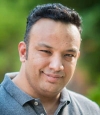All the times listed below are in Pacific Daylight Time (PDT).

8:00 am–9:30 am (PDT)
Keynote Addresses
Beyond Firefighter vs. Safety Matches: Growing the DevSecOps Pipeline
Lessons Learned from a Ransomware Attack
9:30 am–9:45 am (PDT)
Break
9:45 am–11:15 am (PDT)
Track I
"Disorganizing" Your SRE Organization
Everything We Did Wrong to Do Accessibility Right at BuzzFeed
Track II
Exploiting Brain Vulnerabilities: Chaotic Good at Scale
Re-imagining Management Methods for Distributed and Clustered Systems with Kraken/Layercake
J. Lowell Wofford, Kevin Pelzel, and Travis Cotton, Los Alamos National Laboratory
11:15 am–12:00 pm (PDT)
Break
12:00 pm–1:40 pm (PDT)
Track I
Kind Engineering: How to Engineer Kindness
More Performant Cluster State Management Using Open Source Firmware and a Kraken
Track II (Core Principles)
5 Years of Cgroup v2: The Future of Linux Resource Control
BPF Internals
1:40 pm–1:55 pm (PDT)
Break
4:00 pm–5:00 pm (PDT)
LISA21 Sponsor Events
View the list of LISA21 Sponsor Events.
Wednesday, June 2
8:00 am–9:30 am (PDT)
Plenary Session
Computing Performance: On the Horizon
Performance Analysis of XDP Programs
9:30 am–9:45 am (PDT)
Break
9:45 am–11:15 am (PDT)
Track I
Building Community with CentOS Stream
How to Apply GitOps on Infrastructure (for Real)
Track II
Organizational Design for Technical Emergency Response in Distributed Computing Systems
Groove with Ambiguity: The Robust, the Reliable, and the Resilient
11:15 am–12:00 pm (PDT)
Break
12:00 pm–2:05 pm (PDT)
Track I
Sustainable Software Engineering
AppSec Fundamentals for Modern DevOps
Track II (Core Principles)
Protecting System Integrity with Trusted Platform Module
The Cornerstone for Cybersecurity—Cryptographic Standards
2:05 pm–2:10 pm (PDT)
Break
2:10 pm–3:00 pm (PDT)
Popcorn Talks
Popcorn talks are informal, short, silly, and fun talks! Speakers will be given a surprise set of slides and will have 5 minutes max (feel free to do less) to adlib a short talk based on their contents. Expect lots of GIFs, memes, and extremely silly slides, which may or may not be related to tech. A good example of popcorn talks is from DevOpsDays Columbus.
While these talks are obviously unscripted, speakers are still expected to follow the USENIX Code of Conduct, so make sure to review it before presenting.
Sign-ups are first-come, first-serve until we run out of time in the session! If you're interested in doing a popcorn talk, please sign up before May 28.
3:00 pm–5:00 pm (PDT)
LISA21 Sponsor Events
View the list of LISA21 Sponsor Events.
Thursday, June 3
8:00 am–9:30 am (PDT)
Track I
Crypto Agility: Adapting and Prioritizing Security in a Fast-Paced World
The Remote Working Security Conundrum: What Is Reasonably Secure Anyway?
Track II
Why You Should Burn Down Your Datacenter
Selectively Sharing Multipath Routes in BGP
9:30 am–9:45 am (PDT)
Break
9:45 am–11:15 am (PDT)
Track I
Hands-Off Testing for Networked Filesystems
Leveraging AFS Storage Systems to Ease Global Software Deployment
Track II
Year One: Transitioning From Application Engineer to Infrasec Engineer
11:15 am–12:00 pm (PDT)
Break
12:00 pm–1:30 pm (PDT)
Track I
It's Time to Debloat the Cloud with Unikraft
Can Infrastructure as Code Apply to Bare Metal?
Track II
Service Mesh Up and Running with Linkerd
The What and Why of Documenting Your Infrastructure
1:30 pm–1:45 pm (PDT)
Break
1:45 pm–2:35 pm (PDT)
Closing Remarks
Program Co-Chairs: Carolyn Rowland, National Institute of Standards and Technology (NIST), and Avleen Vig, Facebook
Closing Talk
Practical Kubernetes Security Learning using Kubernetes Goat
3:00 pm–4:00 pm (PDT)
LISA21 Sponsor Events
View the list of LISA21 Sponsor Events.





























